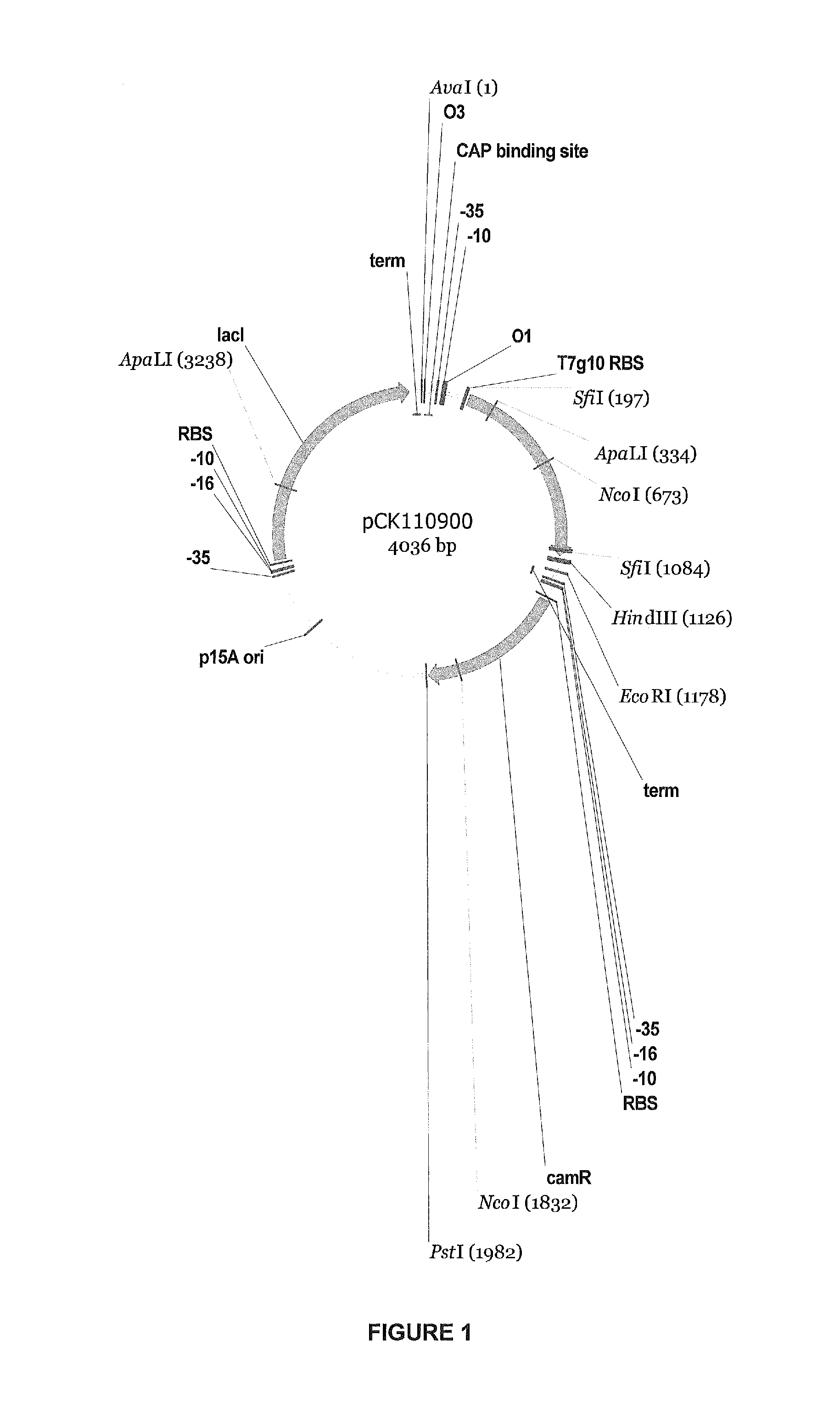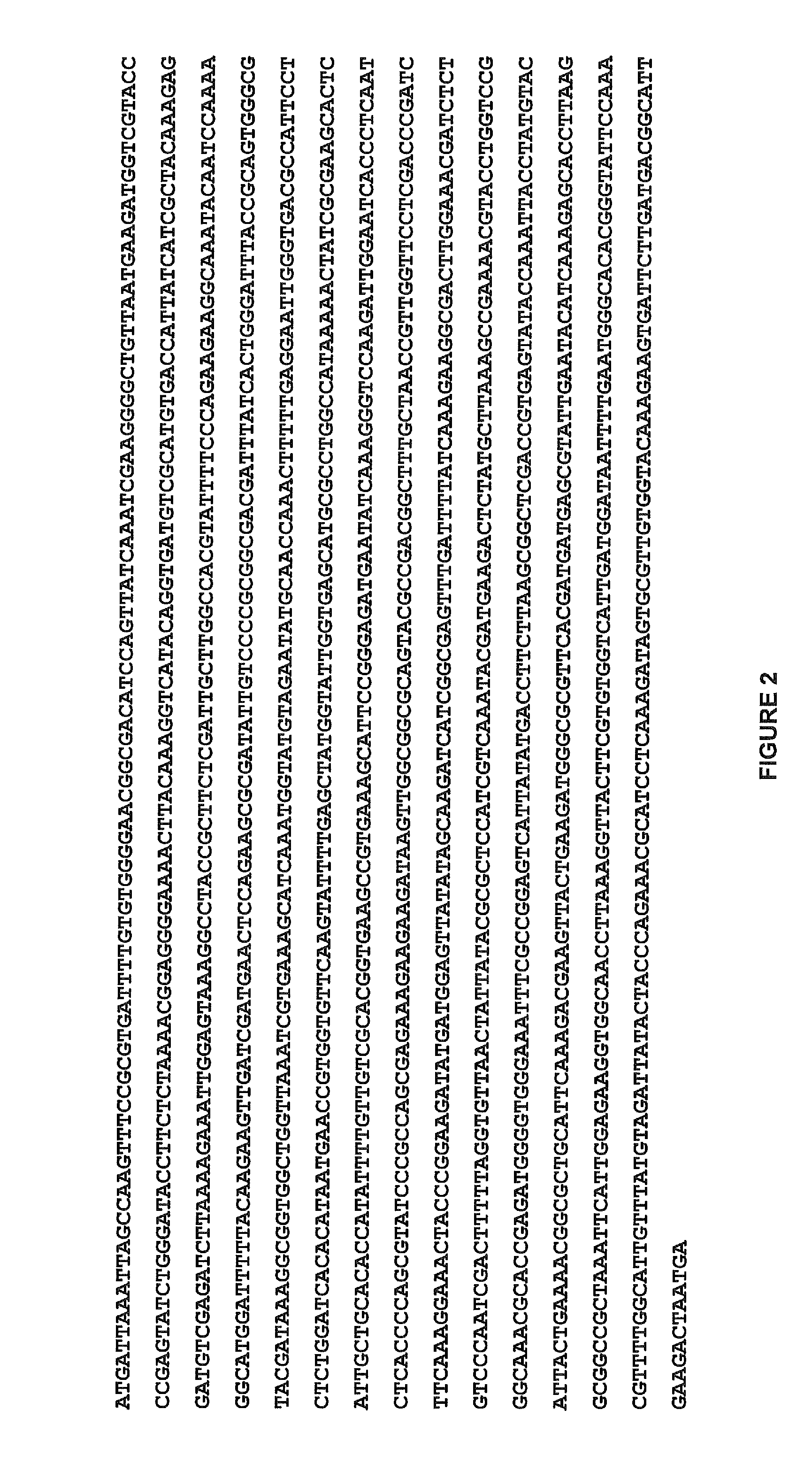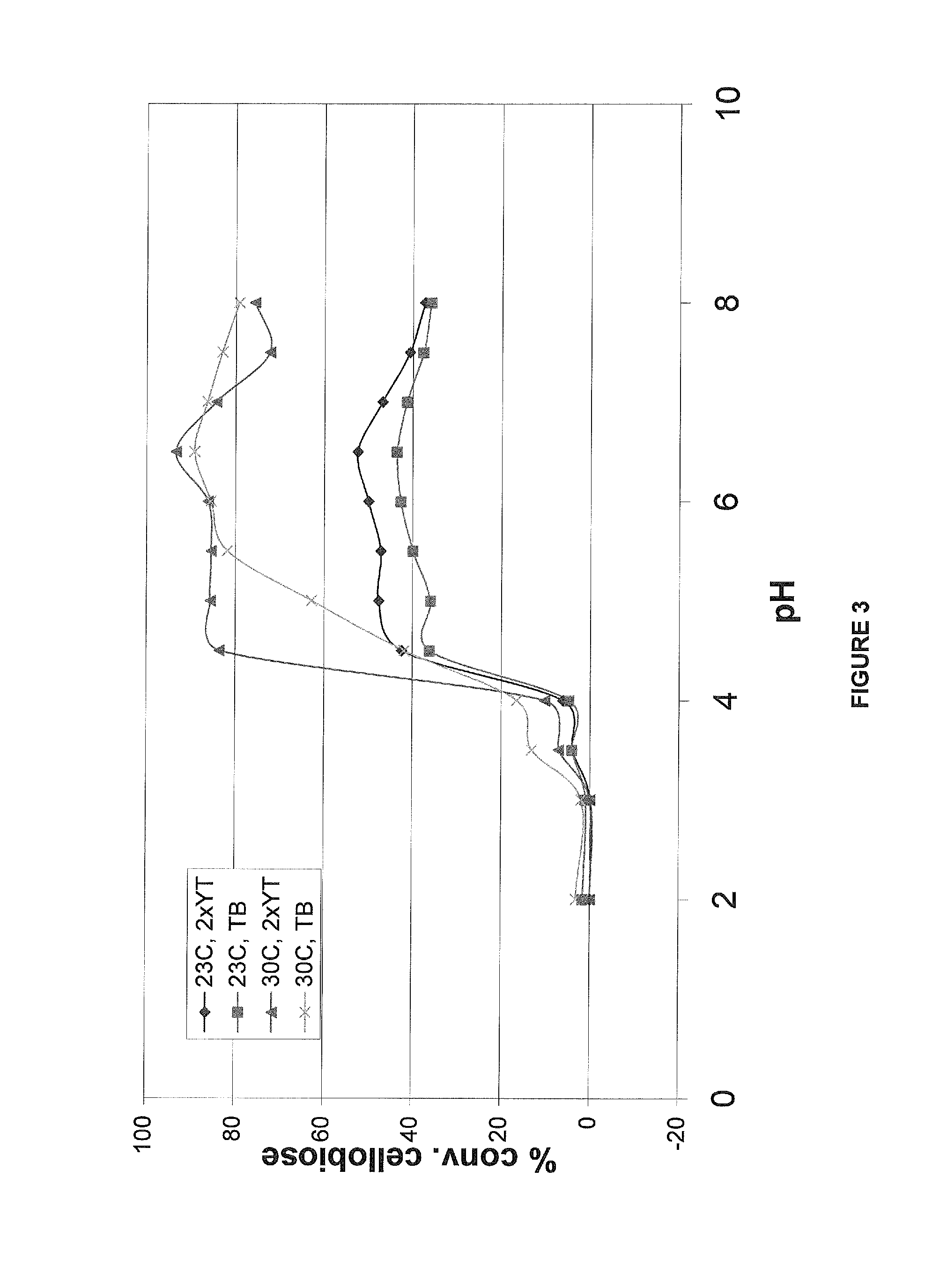Beta-glucosidase variant enzymes and related polynucleotides
a technology of -glucosidase and polynucleotide, which is applied in the field of new -glucosidase variants, can solve the problems of low activity, low level of -glucosidase activity, and difficulty in the hydrolytic conversion of cellulosic biomass to fermentable sugars such as glucose, and achieve the effect of increasing the yield of soluble sugars
- Summary
- Abstract
- Description
- Claims
- Application Information
AI Technical Summary
Benefits of technology
Problems solved by technology
Method used
Image
Examples
example 1
Wild-Type T. brockii cglT Gene Acquisition and Construction of Expression Vector
[0171]The cglT gene was designed for expression in E. coli and Bacillus megaterium based on the reported amino acid sequence (Breves et al., 1997. Appl. Environmental Microbiol. 63:3902) and using standard codon-optimization methods. (See, e.g., “OPTIMIZER: a web server for optimizing the codon usage of DNA sequences,” Puigbò et al., Nucleic Acids Res. (2007 July); 35 (Sub server issue): W126-31, Epub 2007 Apr. 16, which is incorporated herein by reference.) Since codon usage in E. coli and B. megaterium is similar, an E. coli codon bias table was used. The exception was made for CTG codon (Leu); this codon is most frequently used in E. coli, but it is a rare codon in B. megaterium. It was replaced with ATT (Leu). The gene was synthesized by Gene Oracle, Inc, (Mountain View Calif.) as per the designed sequence provided, with restriction sites for cloning into E. coli vector pCK 110900, which is depicted ...
example 2
Production of β-Glucosidase Powders; Shake Flask Procedure
[0175]A single microbial colony of E. coli containing a plasmid with the cglT gene was inoculated into 5 ml LB (Luria Broth) containing 30 μg / ml chloramphenicol and 1% glucose. Cells were grown overnight (at least 16 hrs) in an incubator at 30° C. with shaking at 250 rpm.
[0176]The culture was diluted into 250 ml 2XYT (Yeast Extract Tryptone; Difco reference 244020), and / or TB (Terrific Broth; Difco reference 243820) in 1 liter flask to an optical density at 600 nm (OD600) of 0.2 and allowed to grow at 30° C. while shaking at 250 rpm. Expression of the cglT gene was induced with 1 mM IPTG when the OD600 of the culture was 0.6 to 0.8 and incubated overnight (at least 16 hrs). Cells were harvested by centrifugation (5000 rpm, 20 min, 4° C.) and the supernatant discarded. The cell pellet was re-suspended with 5 mL of cold (4° C.) 50 mM sodium phosphate buffer, pH 7, and harvested by centrifugation as above. The washed cells were ...
example 3
Assays to Determine β-Glucosidase Activity
A. Para-Nitrophenyl Glucoside (pNPG) Assay
[0178]In a total volume of 100 μA, 30 μl lysate from Example 2 was added to 4 mM pNPG (Fluka) in a solution containing 25 mM sodium acetate, pH 5. The reaction was shaken for 30 min at 50° C. and subsequently 100 μA of 2 M KCO3 was added to terminate the reaction. The liberated p-nitrophenyl was measured spectrophotometrically at 405 nm with a Spectramase 190, Molecular Devices, Sunnyvale, Calif. and the amount of released p-nitrophenyl was calculated from absorbance at 405 nm. See Breves, et al (1997), Appl. Environmental Microbiol. 63:3902.
[0179]Results of the reaction of the wild-type enzyme indicated an absorbance level of 4.0, which is indicative of a saturating activity level. In contrast, the negative control, an E. coli transformed with an empty vector, produced an absorbance of 0.0-0.5 under the same reaction conditions. Results obtained for cultures grown on both 2XYT and TB at both 23° C. ...
PUM
| Property | Measurement | Unit |
|---|---|---|
| pH | aaaaa | aaaaa |
| pH | aaaaa | aaaaa |
| temperature | aaaaa | aaaaa |
Abstract
Description
Claims
Application Information
 Login to View More
Login to View More - R&D
- Intellectual Property
- Life Sciences
- Materials
- Tech Scout
- Unparalleled Data Quality
- Higher Quality Content
- 60% Fewer Hallucinations
Browse by: Latest US Patents, China's latest patents, Technical Efficacy Thesaurus, Application Domain, Technology Topic, Popular Technical Reports.
© 2025 PatSnap. All rights reserved.Legal|Privacy policy|Modern Slavery Act Transparency Statement|Sitemap|About US| Contact US: help@patsnap.com



